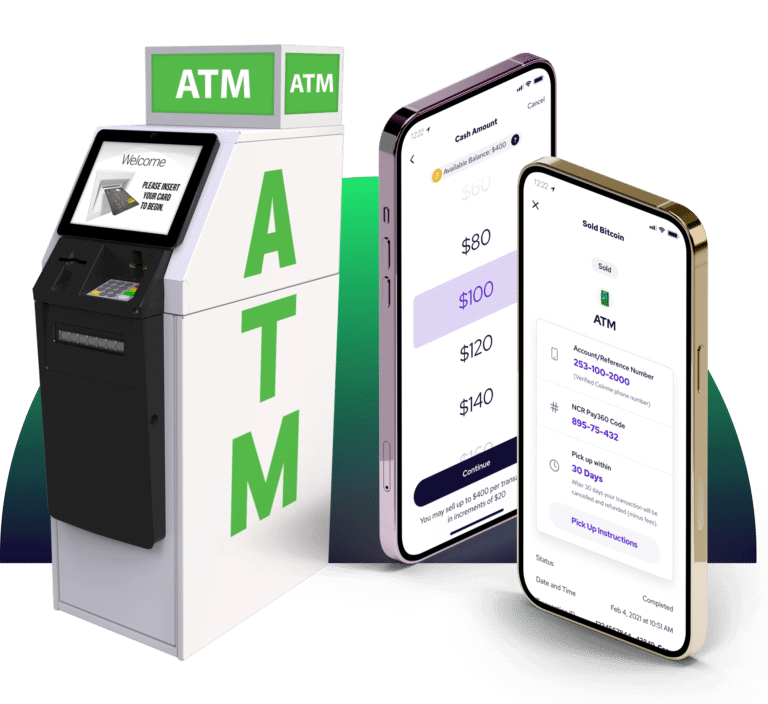So how does bitcoin work? In some ways, this is a great question because it allows the bitcoin community to educate others on the power and advantages of using bitcoin. But it can also be challenging to answer, mainly because there are multiple layers to bitcoin.
Explaining how bitcoin works can be complicated because bitcoin’s underlying technology is a combination of financial engineering, cryptography, computer science, and economic theory — all of which are topics that are dense on their own, and even more so when they are combined.
Nevertheless, we will use this post to outline some of the basics about how bitcoin works. While it is always a good idea to understand the underlying technology of a product or service, it is not necessary to fully grasp all of bitcoin’s technical details in order to extract value from it. After all, most people can’t really explain how the backend of the internet works, or the complexity and multiple settlement layers of a credit card transaction, but we all rely heavily on those in our day to day lives.
And someday it will be like that with bitcoin too. People will undoubtedly continue to wonder how bitcoin works, but the bitcoin network will be so pervasive, and so many people will be interacting with it, that the question will likely fade into that background like it has for other widely-adopted technologies.
Bitcoin: the infrastructure layer
When thinking about bitcoin, it is helpful to think about the technology in two layers. There is an infrastructure layer, and then there is a processing layer.
In the case of bitcoin, the main infrastructure is the bitcoin blockchain. If bitcoin was a transportation network, then the blockchain would be like the interstate system. It keeps everything moving and it allows other services to be built on top of it.
The blockchain, also called a distributed ledger, makes it possible for two people to conduct a transaction without the need for a trusted third party, such as a bank, credit card company, or a payment processor. Essentially, the bitcoin blockchain makes it possible, for the first time, to conduct peer-to-peer transactions on the internet securely and confidently.
Interested in learning more about the history and initial launch of bitcoin? Check out our birth of bitcoin post.
So how does the bitcoin blockchain work?
All of that is made possible because the bitcoin blockchain is able to authenticate and record transactions to a global distributed ledger. Bitcoin’s major breakthrough is its use of a consensus algorithm, known as proof-of-work, that enables networked computers (computers running the bitcoin software) to validate, confirm, and store transaction records using very computationally-intense mathematics.
The use of the math-based consensus system means that the governance of the network can be automated, and executed by computation. Additionally, because proof-of-work is so computer and energy intensive, people have to dedicate more and more resources towards maintaining the network as it grows. As discussed below, the computers that help maintain the system the most, get rewarded with the new issuance of bitcoin.
In other words, the bitcoin blockchain is functioning at a few different levels: It provides a trusted record of transactions, it creates a situation where bitcoin the asset is scarce and resource-intensive to get (like gold, for example), and it incentivizes the continued upkeep and participation in the network through rewards, which become more valuable the larger the network grows.
We will get into the mechanics of the blockchain in the processing section below, but before we do, it is important to note a few more characteristics of how the bitcoin blockchain works:
- The bitcoin blockchain is open source: That means that the code governing how bitcoin works is maintained, enhanced, and sometimes argued over, by a community of developers that contribute to the network’s stewardship. It also means that the bitcoin source code can be replicated (or forked) to create new blockchains and assets. This has already happened numerous times. In fact, many of the most successful cryptocurrencies are forks of the bitcoin blockchain and use proof-of-work as the main consensus mechanism. Rather than a liability from a business or intellectual property perspective, the open source nature of bitcoin means it can draw from the ideas and contributions of a whole world of developers and contributors. And it means that people can freely create other innovative technology on top of bitcoin, like the Lightning Network, for example, which is a way of speeding up bitcoin transactions.
- The bitcoin blockchain is strong and valuable due to its network effect: The more people using, running, and maintaining the network, the stronger it becomes. As the network grows it becomes harder to compromise. The more the network grows, the more secure and resilient it becomes in a giant feedback loop. This is similar to how social networks grow on the internet — the more people on a network already, the more likely new people are to join.
- Bitcoin is permission-less: Anyone can participate and run the bitcoin software that helps the network grow. This feature helps keep the network distributed around the world and helps keep it secure. If there is no centralized database to knock offline, or no leader of the network to detain, then the entire system can run without an off-switch. People and projects are continuing to develop new ways to keep the network distributed and safe from any kind of centralization.
- Bitcoin has no physical limitations: It does not recognize physical limitations such as borders or paper money supply. This makes bitcoin portable and liquid, both of which are good qualifiers for making bitcoin a global reserve currency.
- The bitcoin blockchain is not controlled by any central entity: The economics governing the bitcoin network and the bitcoin currency have already been written into the code. Rather than people and policies, the governance of bitcoin is controlled by mathematics. While bitcoin is designed to operate without the oversight of government or corporate officials, it is still subject to government regulations in certain jurisdictions — and the use of bitcoin is usually regulated at the points where it touches the traditional banking system.
How bitcoin works: the processing layer
For the bitcoin blockchain to function as designed, there are some key processes that need to take place to verify transactions, create new bitcoin, and safely store bitcoin for future transactions.
Here are some of the critical processes that need to happen in order for bitcoin to function:
Nodes
A node is one computer that runs bitcoin software. Many nodes all over the world connect to the bitcoin blockchain creating a web of distributed machines all contributing bandwidth and computing power to the network. If one node (or even several) leave the network, bitcoin would still persist because the blockchain can run on other nodes in the network.
At the same time, the more nodes there are in the world — and the more geographically dispersed they are — the better. More nodes means more resilience and a higher level of security.
Why are bitcoin nodes important?
Bitcoin nodes serve two main functions on the network. A node plays a role in confirming new transactions. And nodes maintain a copy of already confirmed transactions, which are stored as “blocks” of confirmations. When the blocks of confirmed transactions are strung together you get a blockchain.
Running a bitcoin node is like other software. Bitcoin node operators are not manually looking at transactions and confirming details. Instead, each node is following a very specific set of rules written by bitcoin developers. Nodes are also in communication with other nodes and once a transaction is validated (meaning all of the details follow the rules) then it will go through a final confirmation process known as mining, which we will cover more below.
A few other important things to know about bitcoin nodes:
- A bitcoin node can be run on an ordinary desktop or laptop computer.
- There are different kinds of nodes, ranging from full nodes, which sync the entire bitcoin blockchain, to lightweight nodes, which just sync the block header information, which is basically like summaries of what kinds of transactions are in the blocks.
- You can get a glimpse of how nodes, transactions, and confirmed blocks work by checking out a tool like this blockchain explorer.
Bitcoin Mining
We cover the bitcoin mining process in more depth in another post but the key takeaway here is that the mining process is critical to the functioning of the bitcoin network. Through a computationally-intensive process, measured in hashing power, specialized bitcoin mining rigs confirm the transactions that were validated by other nodes on the network. These confirmed transactions are packaged in blocks and added to the blockchain. Miners compete, through computation, to win each block reward, which is paid out in new bitcoin.
Why is bitcoin mining important?
As mentioned earlier, bitcoin mining plays a key role in maintaining the bitcoin blockchain. The economic incentives of earning new bitcoin by confirming transactions and converting them to blocks of data means that bitcoin can run without any kind of corporate or governmental oversight. The reason? Bitcoin miners are heavily incentivized to build specialized computing equipment and then pay the electricity and bandwidth costs to mine because the can earn chunks of new bitcoin.
Another way to think about bitcoin mining is that proof-of-work requires energy to maintain and create. As the network grows and becomes more heavily used, it requires a greater input of resources required to run and maintain it. So, because it is resource intensive, bitcoin is a network and currency backed by energy.
A few other important things to know about bitcoin mining:
- Because it is so valuable, bitcoin mining has become its own industry, including mining rig manufacturers and mining services.
- Bitcoin mining is energy intensive, but it is also driving many mining operations towards renewable energy sources (especially hydroelectric power) because it helps keep costs lower.
Bitcoin Wallets
When talking about the processes that make bitcoin possible, it is important to mention bitcoin wallets. Wallets serve multiple functions, and for people that want to use bitcoin as a form of payment, as a store of value, or as an investment tool, wallets make interacting with the blockchain safe and easy.
Bitcoin wallets, like a Coinme wallet, handle the back end functionality for users. Every time you convert cash to bitcoin, or send or receive bitcoin from elsewhere, your Coinme wallet is essentially broadcasting transaction information to the bitcoin node network. Your transactions will be confirmed and your new balance of bitcoin will show up in your wallet without you having to operate a full node.
Why are bitcoin wallets important?
A bitcoin wallet is like the blockchain’s user interface. Through wallet providers, like Coinme, anyone interested in buying, sending, or receiving bitcoin can do so by securing a wallet and then using their bitcoin address to send and receive.
If the blockchain is like the https of the internet, then a wallet is like email.
A few other important things to know about a bitcoin wallet:
- If you plan on using a bitcoin wallet, it is really important to understand basic wallet security and best practices. This post about bitcoin security can help.
- There are different kinds of bitcoin wallets that offer different features. Make sure to find a reputable wallet provider that can be trusted and provides great support (like Coinme!).
- Check out our bitcoin wallet post to take a deeper dive.
How bitcoin works: a recap
Bitcoin is a multilayered system where security, privacy, and the ability to conduct peer-to-peer digital transactions are prioritized ahead things like ease-of-use and flimsy network protection.
In order to achieve the goal of a global, permissionless, trustless network, bitcoin operates at several different levels ranging from the infrastructure level to the economic/network effect level.
Bitcoin might seem complicated at first glance, but there is also an elegance to the code that has made it so successful in such a short period of time.


